* All articles are edited by HAS magazine, unless indicated by * next to the author’s name.
.
The origin of art predates writing and language.
As far back as the Stone Age, after the tribal groups went hunting, fishing and farming, they described their labour and life on rocks, carving totemic signs that became hieroglyphs, in order to convey the scenes of labour activities to their tribesmen. This is the origin of painting that marked the birth of primitive art. To celebrate the harvest of farming, hunting or fishing, the primitive tribesmen gathered together, cheering and singing, stomping and stamping to show their happiness. This is the prototype of dancing and singing.
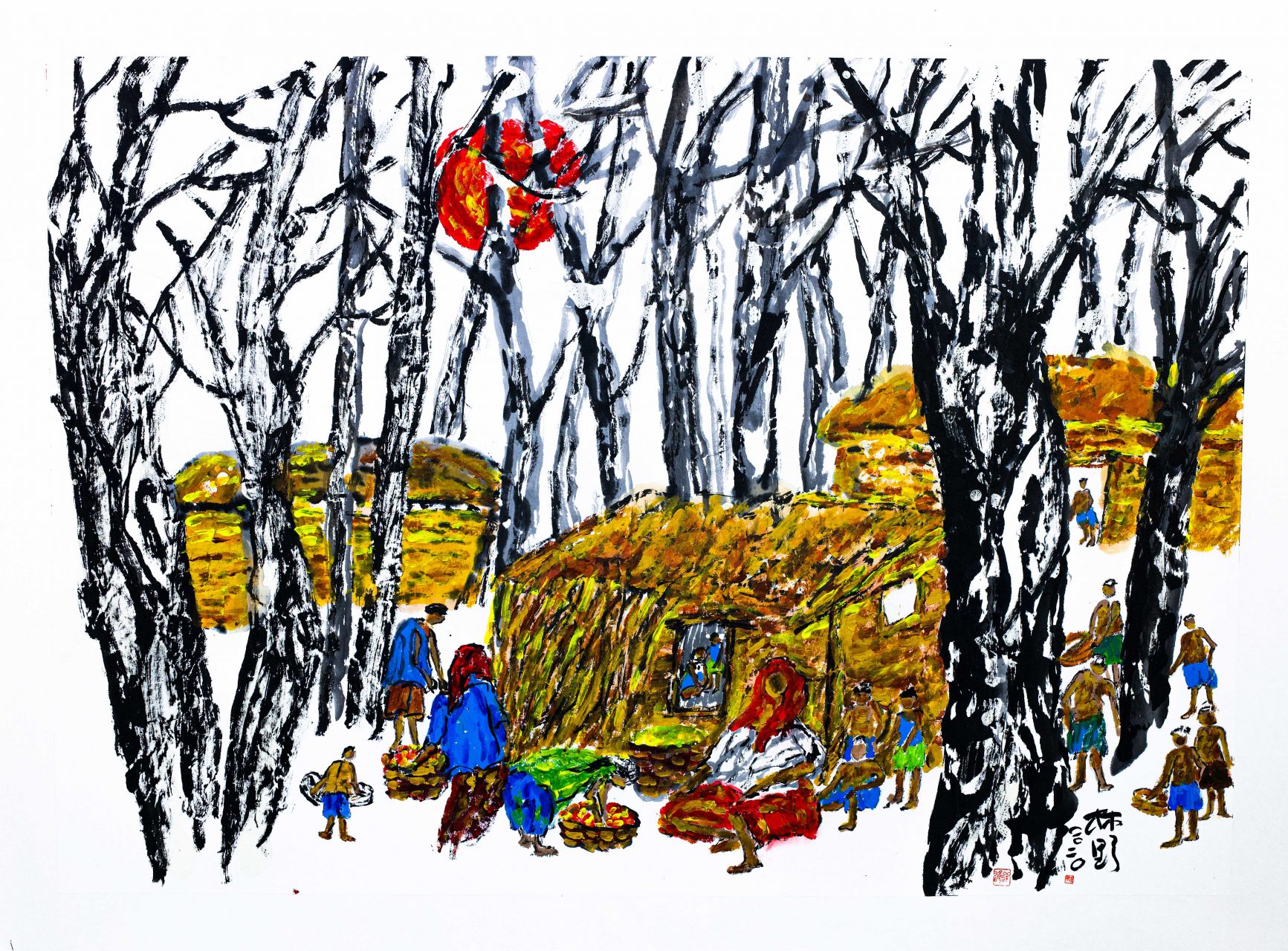
In their study, art historians conclude that art originated from human labour and life; that is to say, art has a close relationship with human life and the labour and activities of daily life. In other words, the origin of mankind and art constitutes a life community. Artistic cells are born within human blood. And this gene forms an inseparable part of human life.
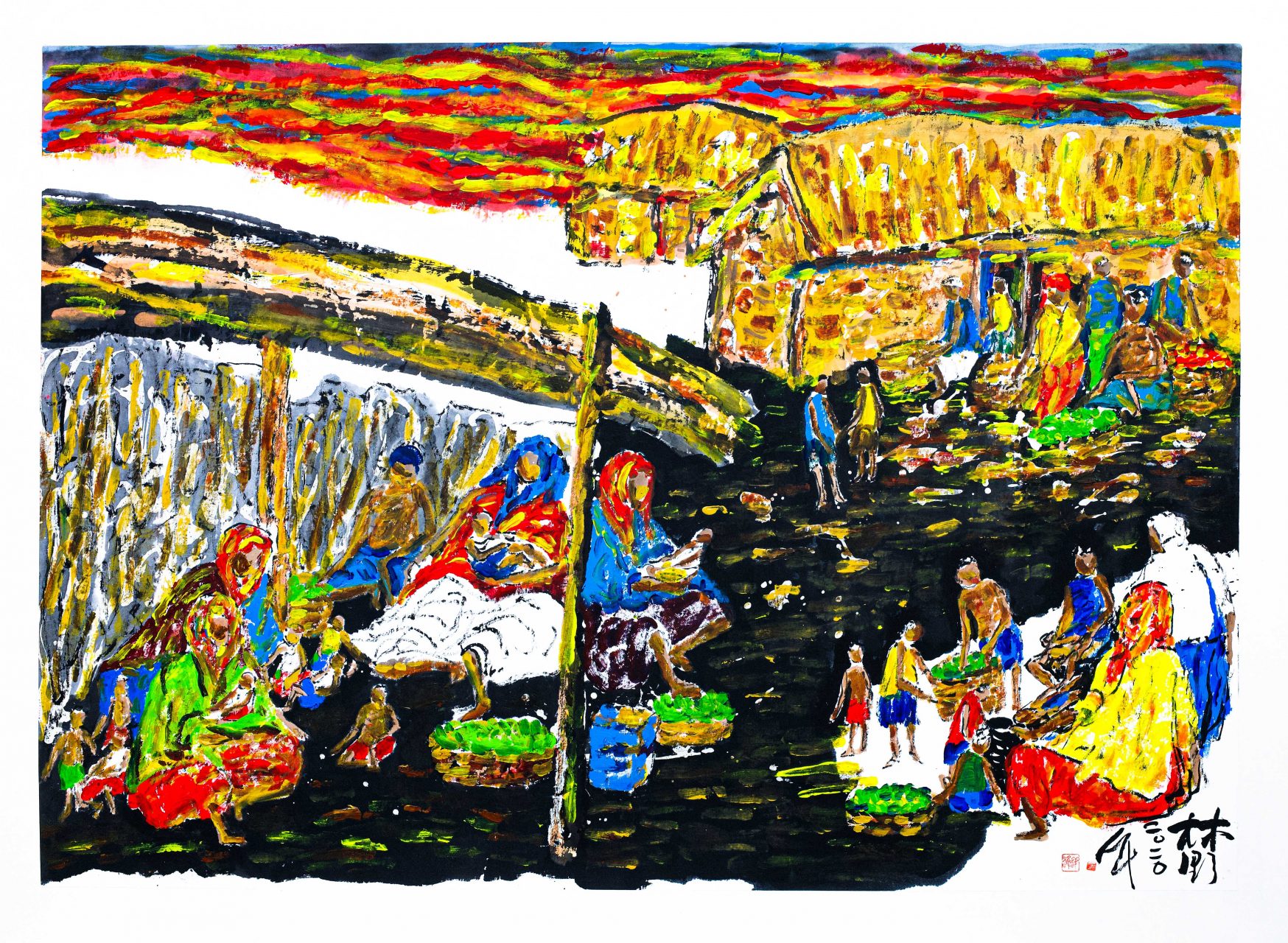
Humanity has gone through a long period of evolvement and evolution, from the primitive Palaeolithic age to the Neolithic age, changing its primitive way of life by collecting wood for fire instead of eating raw animal flesh and drinking its blood. From pictographic totems to characters, from fishing and hunting to farming, adopting boats and carts, and weaving, human beings entered the farming era and agrarian civilization was born.
Art, from the paintings of pictographic signs and totems to dance songs for festivals, has gradually expanded to architecture, sculpture, drama, literature, film and television through centuries of human evolution, ultimately constituting human spiritual civilization.
Art is the carrier of human culture, and culture is the platform of human civilization.
Art is the carrier of human culture, and culture is the platform of human civilization.
The spiritual and material civilizations of human beings are measures of the cultural levels of different regions and countries, of different skin colours and ethnic groups on the earth, as well as the driving forces for nations and their social and economic progress.
For a country or nation with a rich, accumulative civilization, poverty and backwardness are temporary, whereas for a country or race that has no cultural disposition, its wealth and prosperity will be short-lived.
Looking at the thousands of years of evolution of human civilization and its cultural process, we can see the driving force of art and culture in the development of human society and economy. At its initial stage, art went through a long period of exploration from the primitive era to the formation of human civilization, and artworks were used merely as communication tools between people to convey the labour process. The subjects of Western art before the Christian era were all centred on the feudal ruling class. In the Christian era, religious themes were added. It was not until the Middle Ages that post-Renaissance art appeared in Venice, Italy, and a new mission and new tasks were given to artworks by the times. Artists freed themselves from the shackles and rules of the feudal system, and they broke through the religious restraints and let their souls soar in the blue sky. They looked for subjects of artistic creation from events in real life, combined their own thoughts and emotions to forge a creative blend of classical and romantic realism. Da Vinci, Michelangelo, and other great masters are the representatives of this period in the Western art history. Later, in the 16th and the 17th centuries, Critical Realism and Critical Romantic Realism focused on social reality, people’s lives, and war. Artists used their brushes to vividly express their inner thoughts and feelings, and criticized social ugliness and wrongdoing in their paintings. Théodore Géricault of France, Kaethe Kollwitz of Germany, and Ilya Repin of Russia are representative figures of this artistic trend.
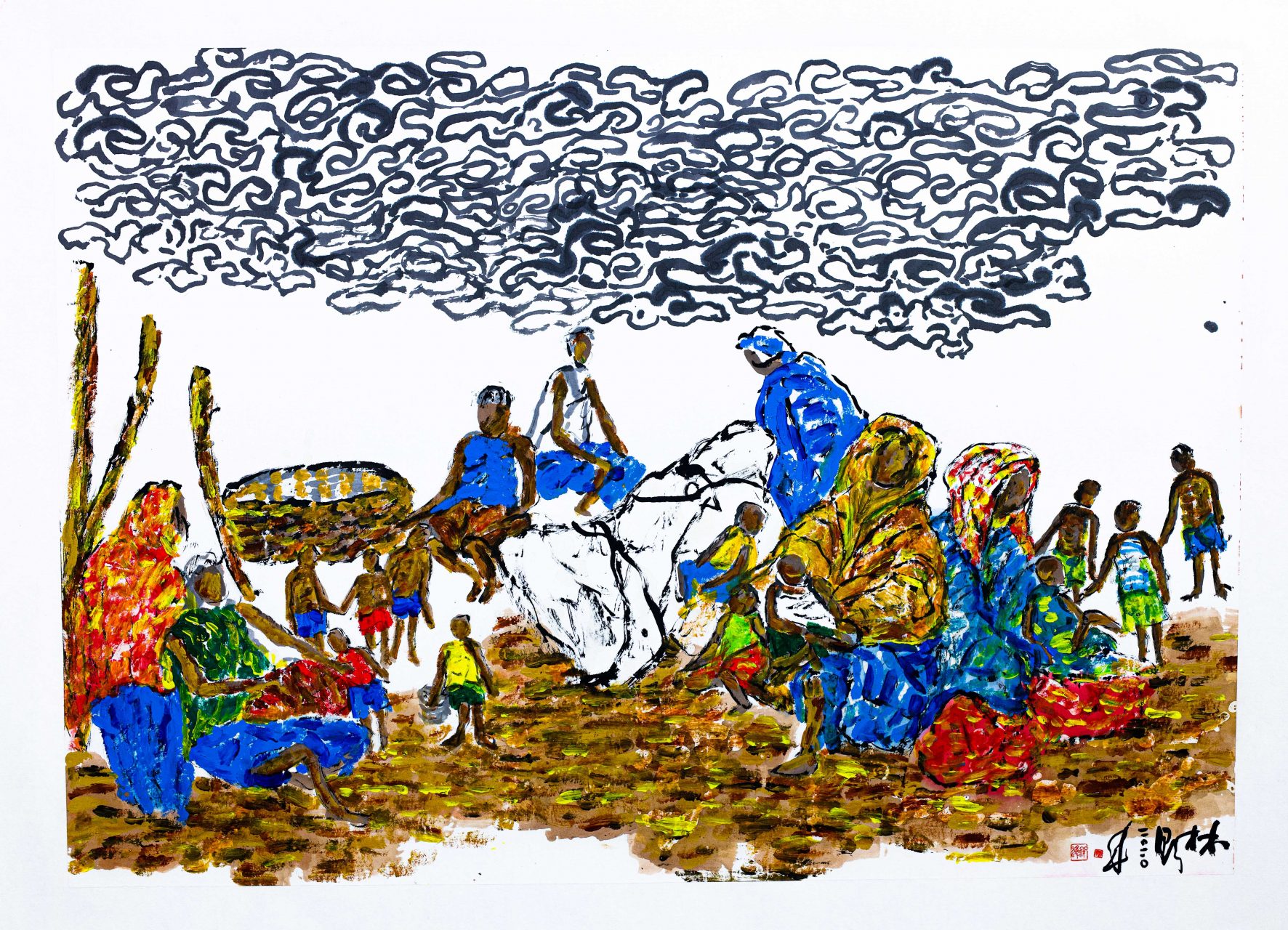
If works of art are fragments of human history, the great pieces in this period in the history of Western art reflect the true history of the people. These great artists have created immortal representations of Western human history by depicting their own experience, and this is the true mission of these artists.
After the 19th century, Western art seems to have deviated from the principle of this artistic mission. Under the influence of the decadent spirit of capitalism, art displayed a negative, unruly creative style, and lost the direction of the artistic mission.
In the field of the Western art from the second half of the 20th century to the 21st century, the pure soul of the vast majority of artists has been tainted by material enjoyment. People are spiritually depraved and dejected due to their social environment and wealthy lifestyle, and the value, meaning, and goals of life have all but been lost. The arts in particular went astray, which explains the absence of great artists, writers, and philosophers on the stage from the 20th to the 21st century.
Man comes into the world with his own crying, but leaves the world in the crying of others. Several decades of life and dozens of springs and autumns all end in crying. Everyone goes through the same stages as they come into the world and leave it. The difference is: What you do in the period in between? What do you leave behind? Can you make history, society, and people remember you, miss you, and keep you alive forever in the hearts and minds of the future generations? This is the innate responsibility and mission of human life.
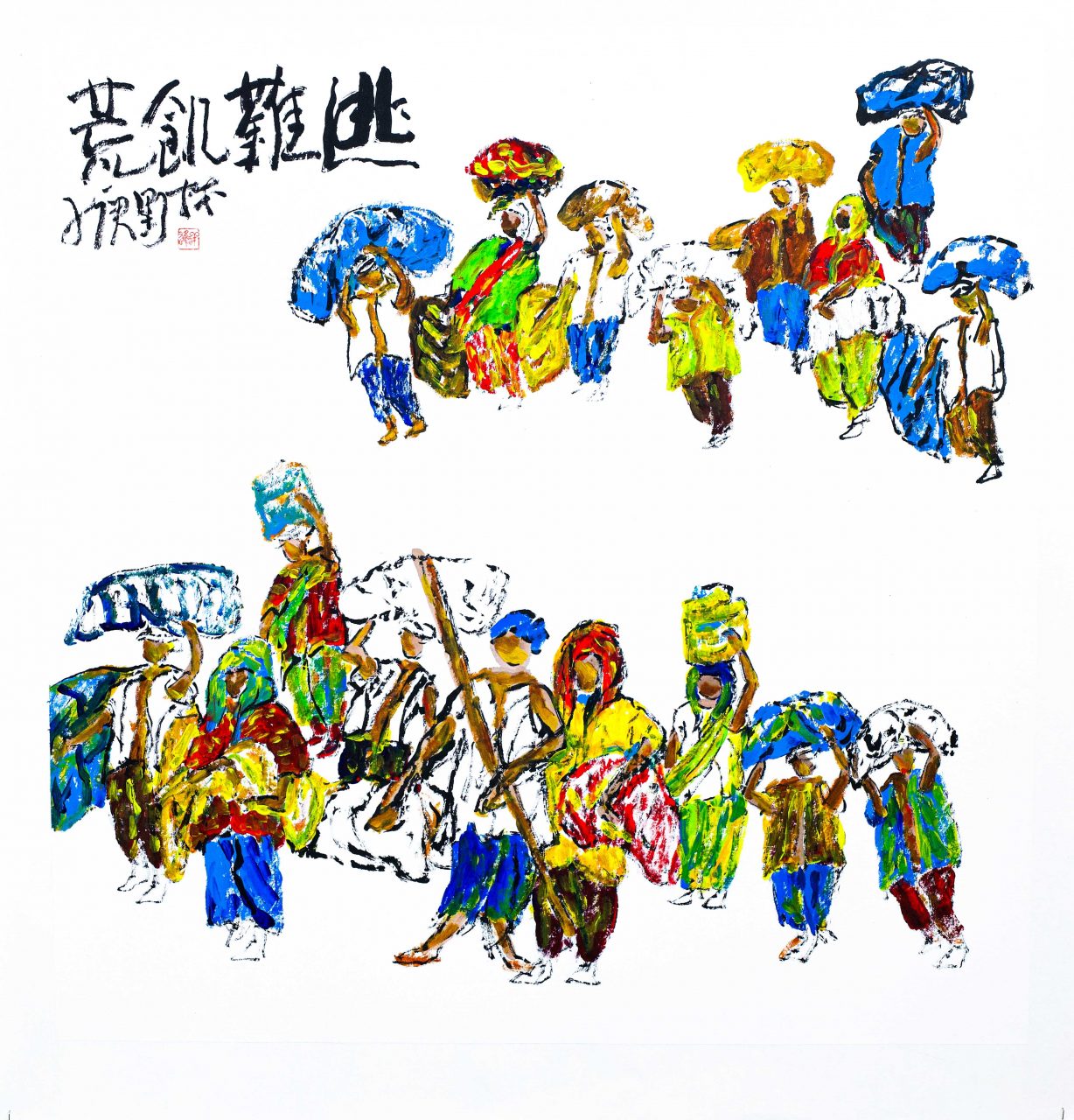
Teachers, those we call engineers of the human soul, ought to benevolently and tirelessly guide students toward the right path of life, instilling right etiquette and integrity in students, the virtue of respecting the righteous and the elderly, and cultivating their spirit and image as future social pillars with positive mentality. This should be the mission and noble cause of educators. Instead, education workers nowadays regard this historically lofty cause and career as just a job, a profession to make a living.
An artist, like a teacher and a physician, also has an inherent career mission
Physicians, traditionally regarded as gentlemen with compassion and life-saving skills, relieve pains and cure illness. Medicine is not only an inherently noble career, but a life-long mission. However, things have changed, as have the society at large and the moral thinking of the time, and there are fewer and fewer doctors with this kind of morality and medical ethics. Specialist doctors earn a lot of money, and more and more doctors have handsome incomes, but they have betrayed the role of “physician with a parental heart” and their career mission.
An artist, like a teacher and a physician, also has an inherent career mission. He is to dedicate his life to the artistic cause. By observing the life and events of society through his artistic process, historical truth is refracted by the creative carrier through his own thinking and emotions. The brush that depicts the spring and autumn of human society not only provides fragments of the recorded time and its objective reality, but also practises an epic, artistic mission and eternal spirit in his own career. This kind of “ascetic” artist, with determined dedication, spends his entire life exploring the true meaning of art, and pursuing his artistic mission. With his historical and world outlook, he exposes the cruelty of bloody warfare that rages around the world. He calls for peace, and his brush reflects his personal experience as he witnesses the dark side of a bright society and the poor life of the lower classes; their harsh living environment, presented in a naked fashion in his paintings, enables viewers to feel the shock caused by the vicissitudes in order to evoke the right way forward.
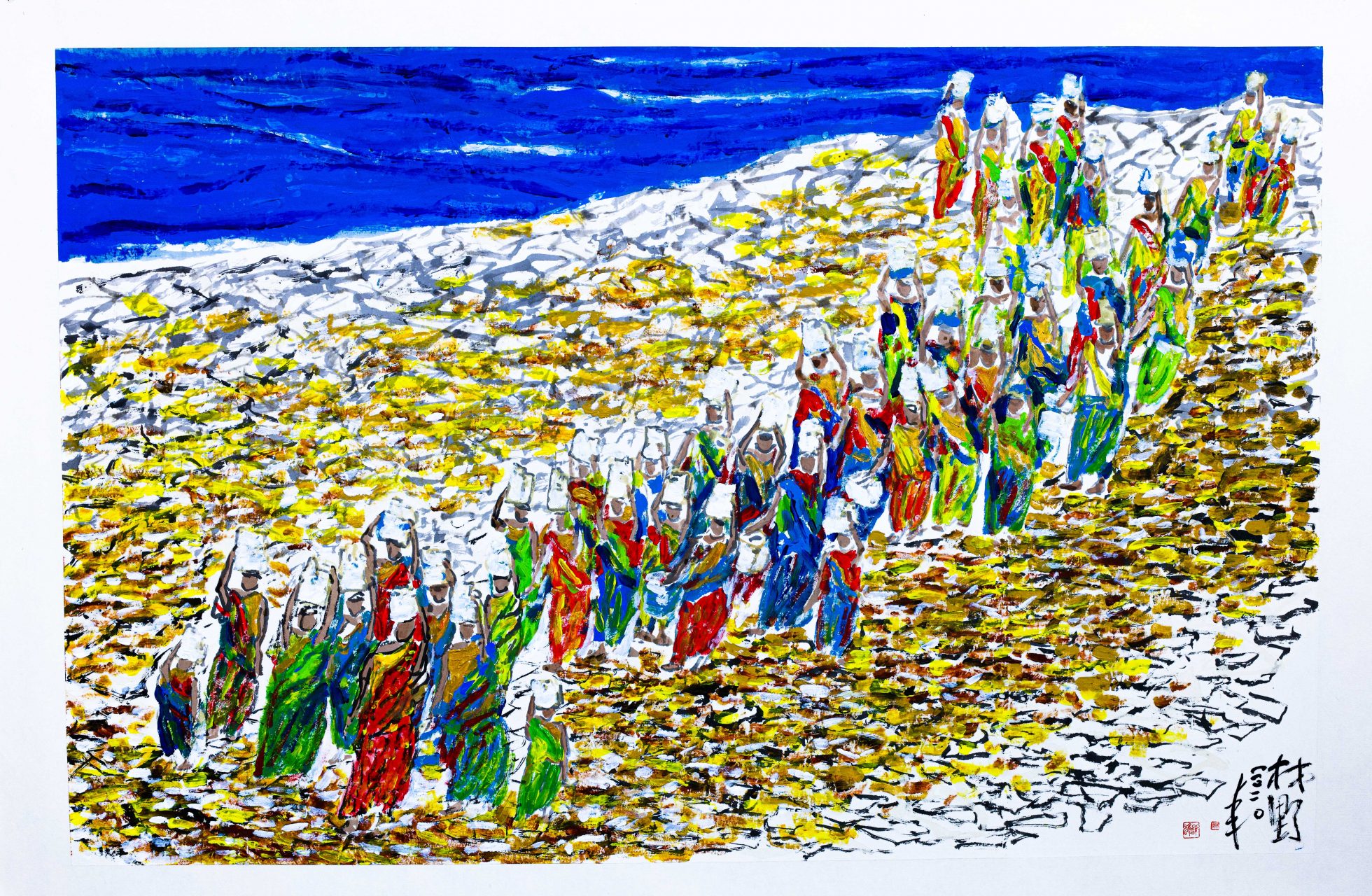
The great wheel of art history has turned to the highly civilized era of the 21st century. On the one hand, high tech has evolved into the decryption and cloning of life genes. Digital information not only monitors human beings, but also reveals people’s privacy. On the other hand, because of impetuous human nature, the struggle for national hegemony, the geopolitical game, and economic plunder, a long shadow has been cast over this beautiful period of civilization, and human justice and civilization has suffered setbacks. Human nature, especially the nature of the monopolists, has fallen into the bottomless abyss of the law of the jungle with bestial behaviour, against rationality and humanity. In this dark period of the civilized era, human society is urgently in need of cultural and artistic thinking, and of works that purify man’s soul and clarify his mind, so as to gradually reverse the current human impetuosity, return barbaric thinking to the right track, calm political frictions and economic conflicts, and build a congenial society and a harmonious global village. Therefore we need, more than ever, artists with a sense of artistic responsibility and mission.
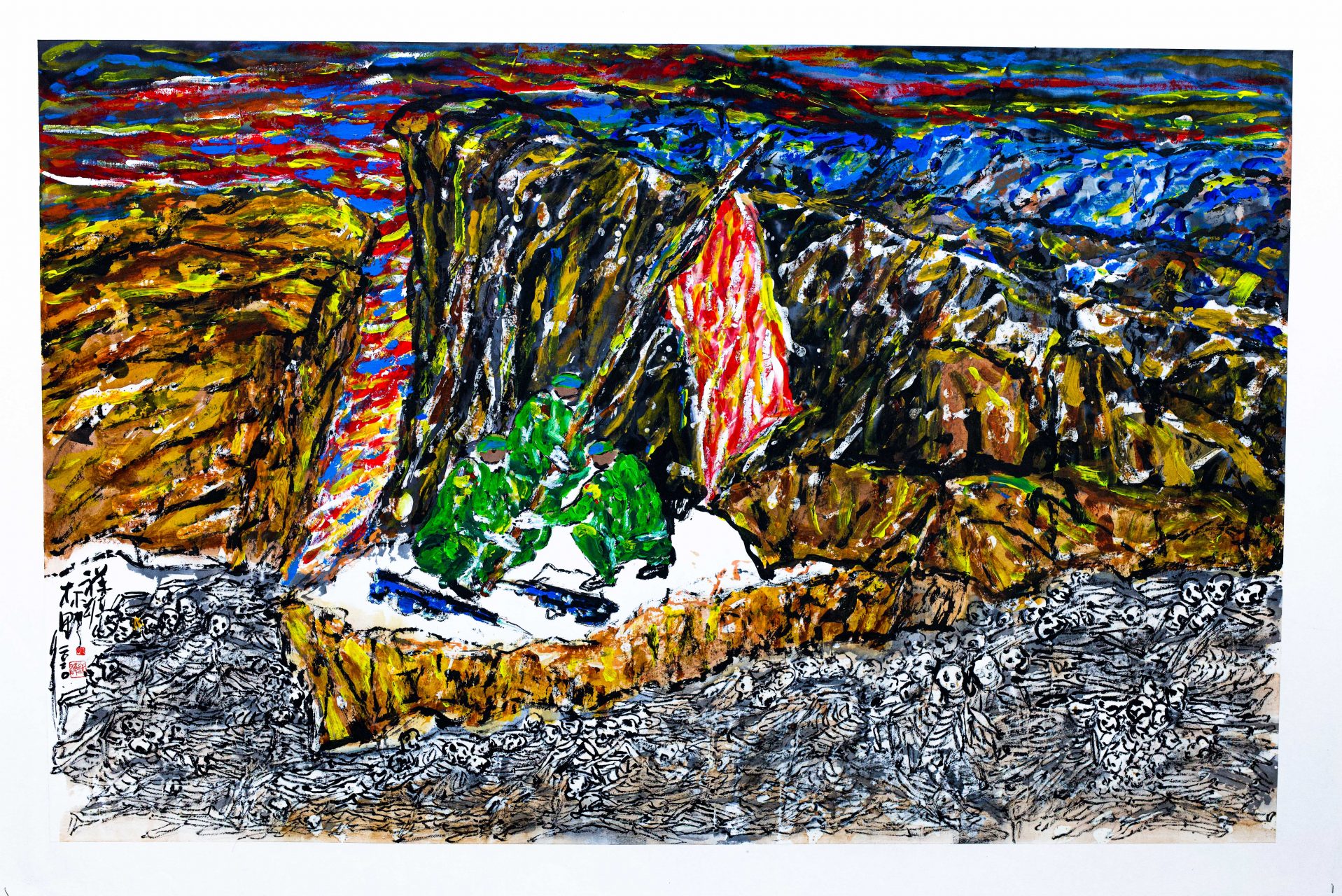
Looking back at the plain purpose of the original human art, which is expressed through symbols and totems taken from labour and life, and which conveys the practical experience and harvest of labour, we can say that this is the artistic mission of humanity of the primitive times. Although it is a very ancient and unadorned means of expression and communication, the combination of humanity and art, and the creation of colourful life, are innate and natural. The value, proposition, and mission of artistic creation are to be spiritually enjoyed because of the nourishment that artists draw from nature. The beauty of the natural world will be represented because of the creation of artists.The difference in the attainment, knowledge, understanding, personal background and situation of artists, and the difference in the times and social environment, have produced different interpretations. If a person can be a companion to art and walk alongside it, there will be a spiritual sublimation to his life that gives him a colourful inner world. The artistic mission, even with disagreements and different views about it, will not stop the artist’s creative instinct and impulse, or change the life value of his/ her artistic creation.
President of the Global Chinese Arts & Culture Society, Research Fellow of the Chinese National Academy Of Arts, Guest Professor of School Of Arts, Peking University, President of Honour Mémoire de l’Avenir. Professor Lin Xiang Xiong, an artist and entrepreneur, is a Singapore citizen. Born in 1945 in China’s Guangdong Province, he moved to Nanyang in 1956. He studied fine arts in the Singapore Academy of Arts between 1965 and 1968 and in Paris between 1971 and 1973. He has held seven solo exhibitions in Singapore and Thailand (1968-1988). In 1990, 1994, and 2013, he was invited and supported by Ministry Of Culture of the People’s Republic of China to hold solo arts exhibitions in Beijing, Shanghai, Xi’an, Zhengzhou, among other cities.
President of the Global Chinese Arts & Culture Society, Research Fellow of the Chinese National Academy Of Arts, Guest Professor of School Of Arts, Peking University, President of Honour Mémoire de l’Avenir. Professor Lin Xiang Xiong, an artist and entrepreneur, is a Singapore citizen. Born in 1945 in China’s Guangdong Province, he moved to Nanyang in 1956. He studied fine arts in the Singapore Academy of Arts between 1965 and 1968 and in Paris between 1971 and 1973. He has held seven solo exhibitions in Singapore and Thailand (1968-1988). In 1990, 1994, and 2013, he was invited and supported by Ministry Of Culture of the People’s Republic of China to hold solo arts exhibitions in Beijing, Shanghai, Xi’an, Zhengzhou, among other cities.
